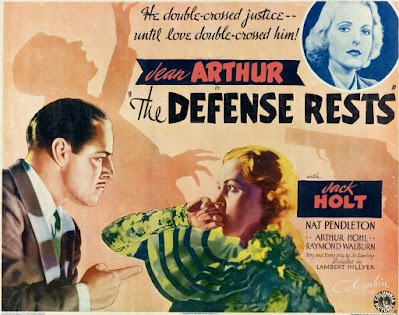(aka CURSE OF THE DEMON.) Director Jacques Tourneur returns (with a less poetic/more concrete manner) to the suggestive horror films he’d made in the ‘40s for low-budget R.K.O. producer Val Lewton (CAT PEOPLE, I WALKED WITH A ZOMBIE, THE LEOPARD MAN). Proving maybe you can go home again if it's Elstree Studios England. Note top below-the-line talent in lenser Ted Scaife & designer Ken Adams. Dana Andrews effectively stars (slurry diction under control) as a supernatural phenomenon debunker, in London to give a lecture, who comes up against his specialty. But how to fight something you don't believe exists? And with only three days before Demon-enabler Niall MacGinnis has foretold your death by a ‘force’ he only partially controls. Peggy Cummings shows neat ambivalence as a newly hired assistant to a colleague of Andrews who dies mysteriously, and there’s a smash perf from Athene Seyler as MacGinnis’s worried, unloyal mother who prefers psychic mediums to demon romancers. Add in unexpectedly sympathetic Scotland Yard types and simple, if alarming, F/X* (with an hallucinatory/infrared quality to some of the night shots) and you’ve got something pretty special. Tourneur’s lack of quality follow up offers to direct a mystery.
AMBP: *The physically realized Demon Monster was added post-production against Tourneur’s wishes. Also: the original Stateside release, CURSE OF THE DEMON, lost 12 minutes. The complete cut should run 95".
DB: While best known for classic horror (as mentioned above) and noir, let Tourneur surprise you with the deeply felt religious-themed Americana of STARS IN MY CROWN/’50. (Many of these covered below, simply go to the main web page and type Tourneur in the upper left hand corner Search Box to bring them up.)





























